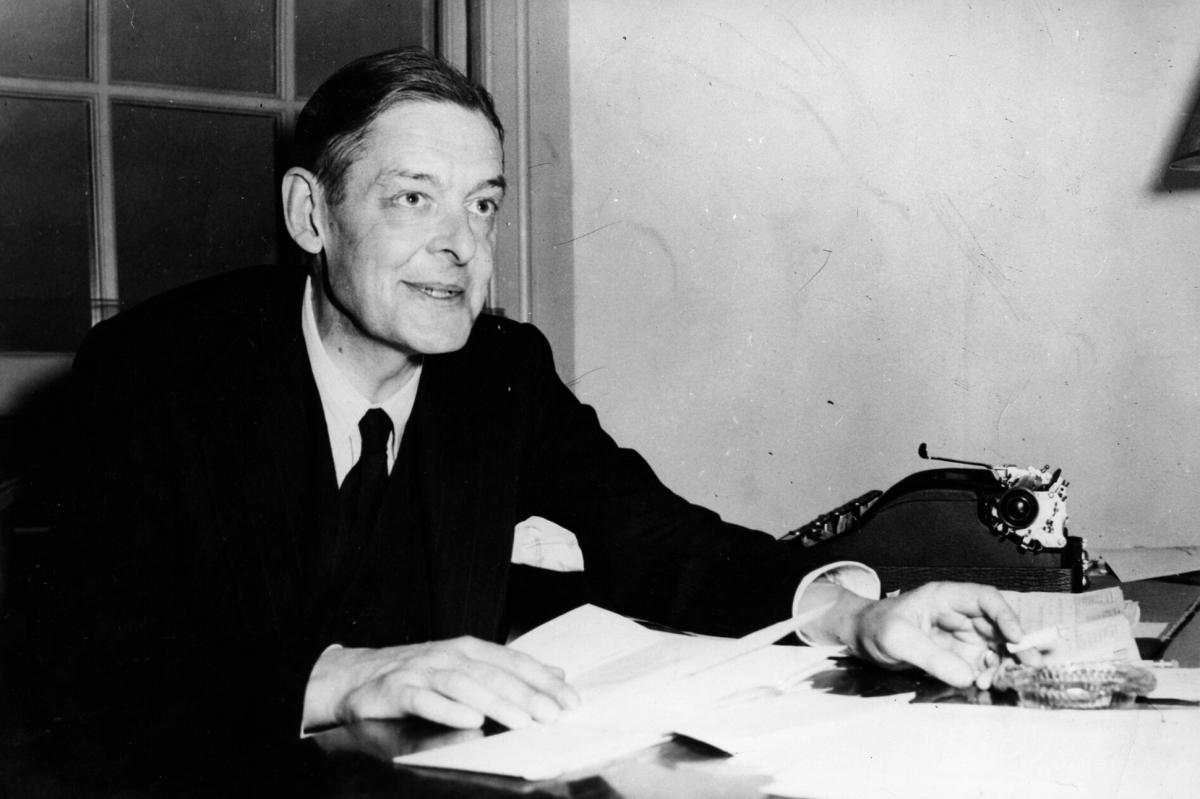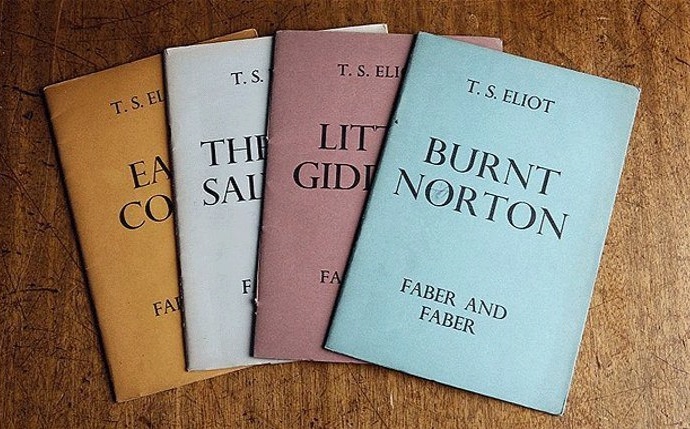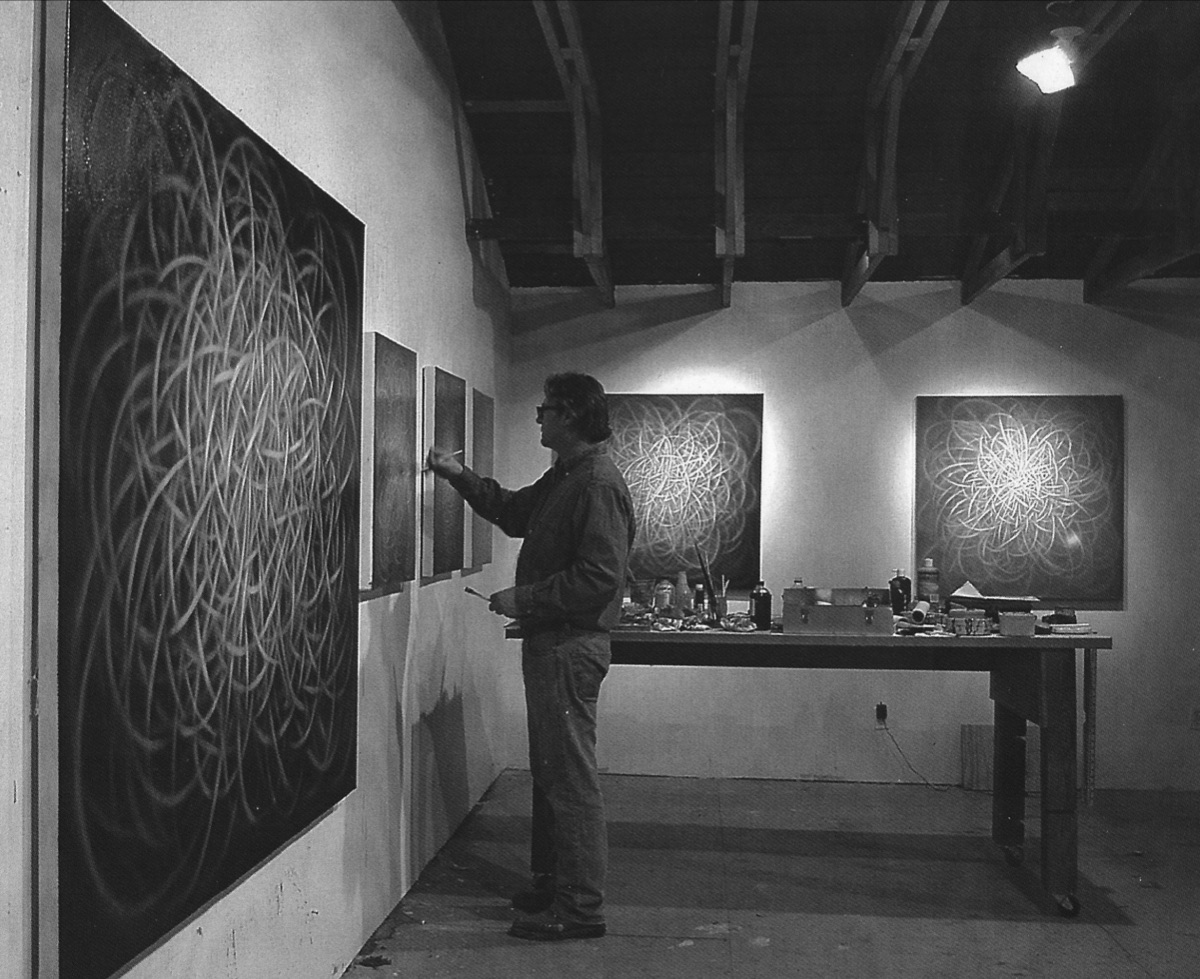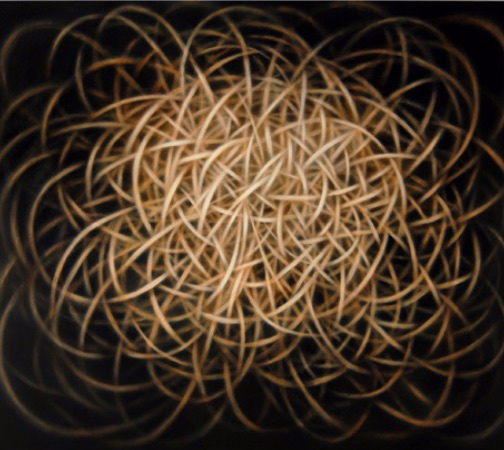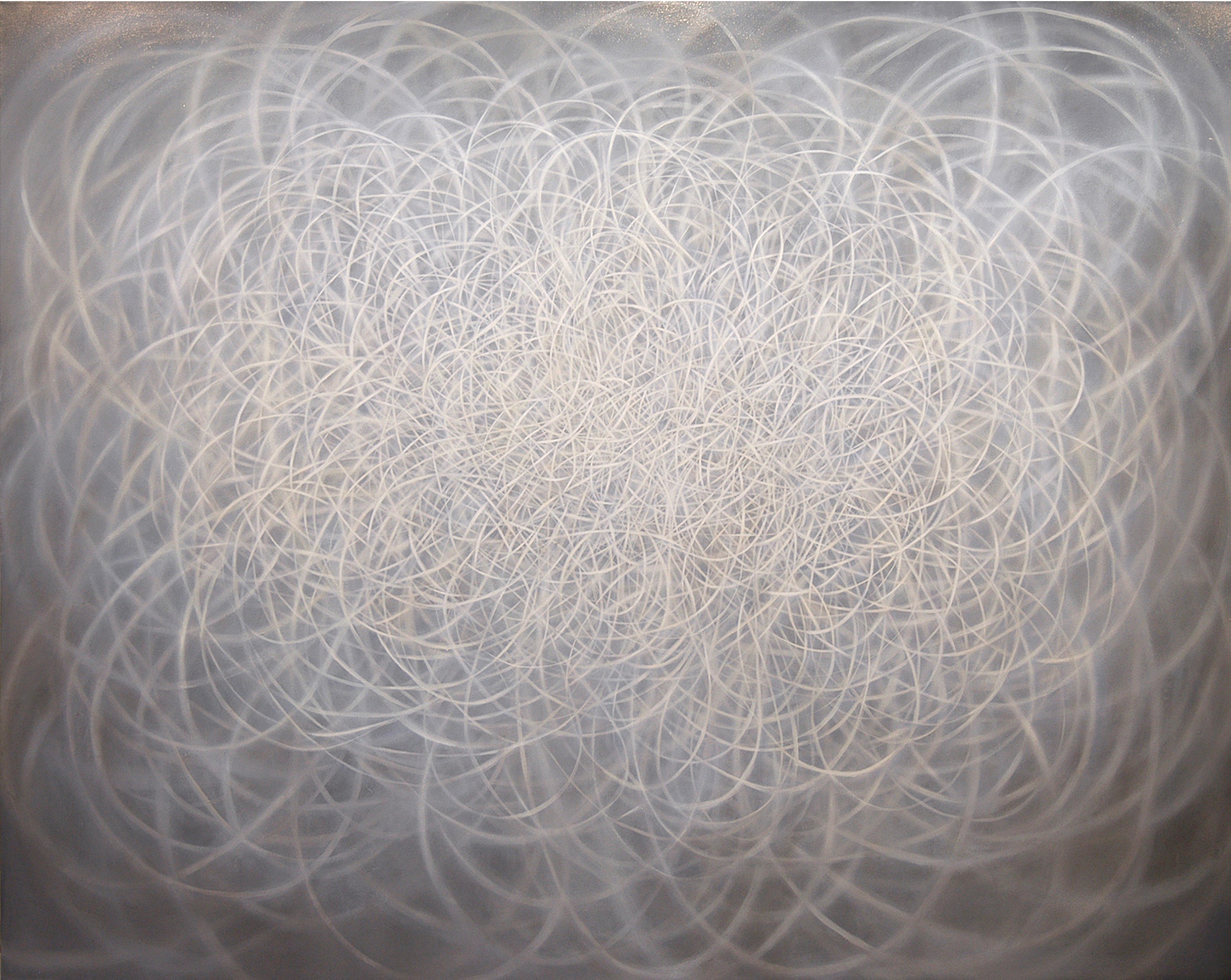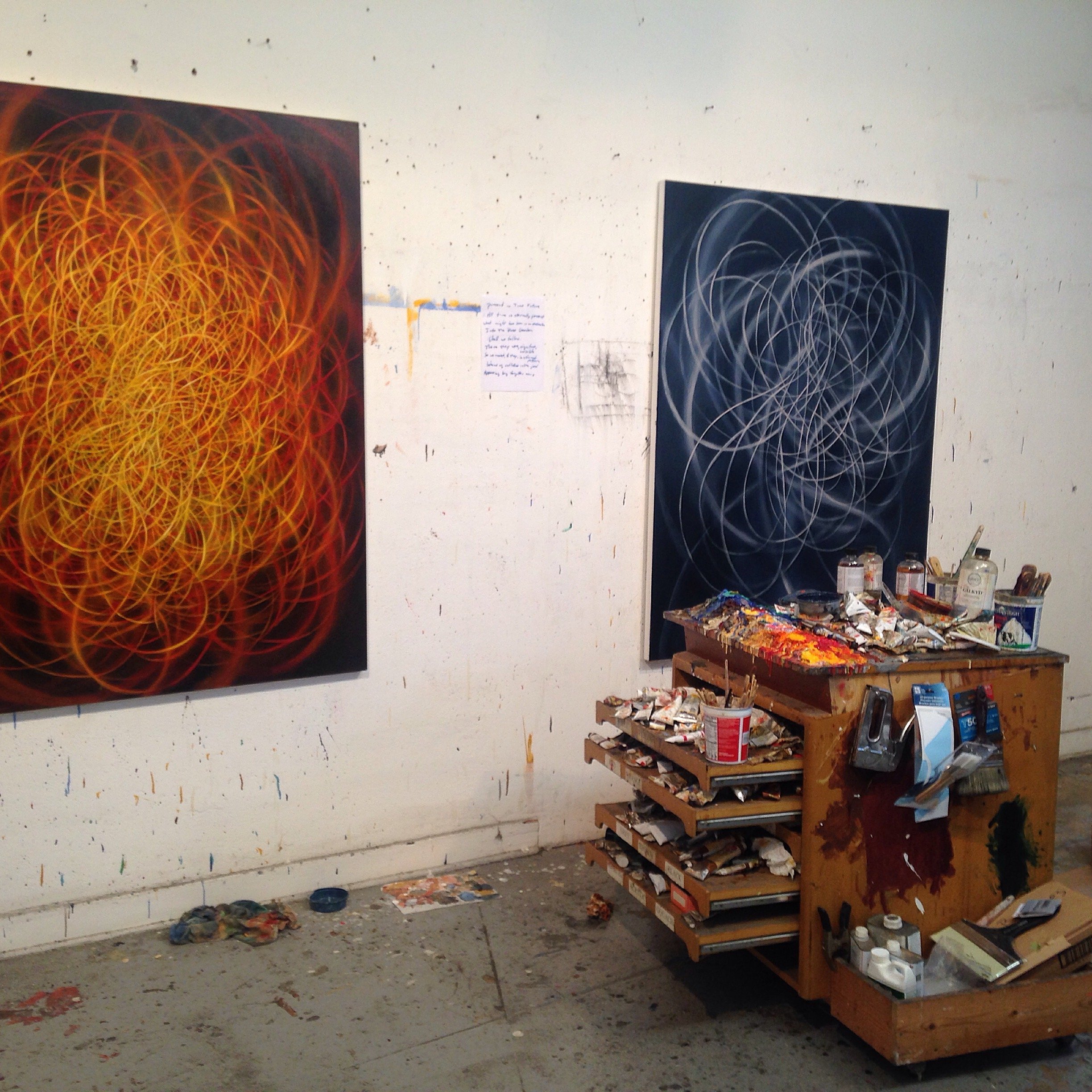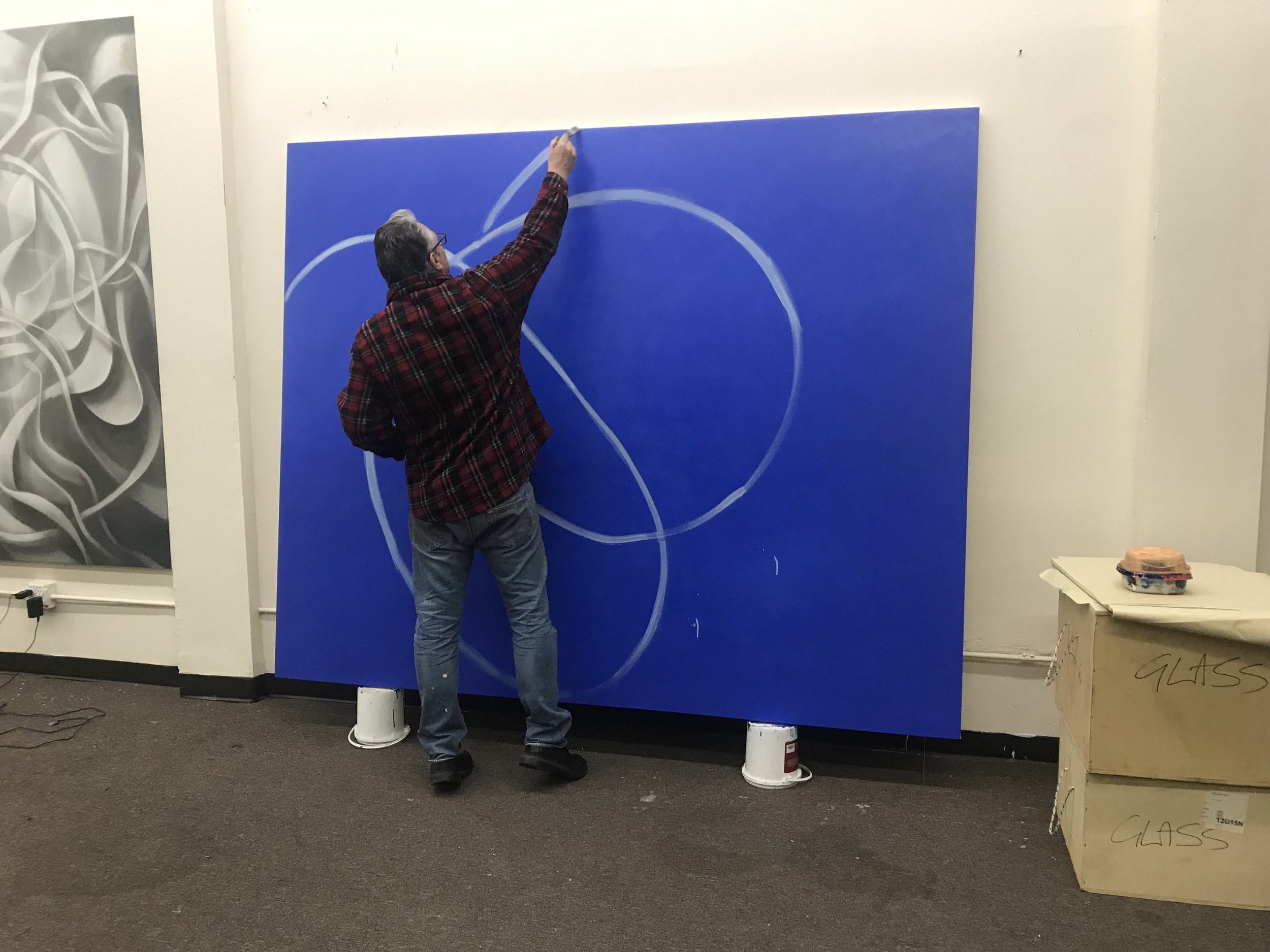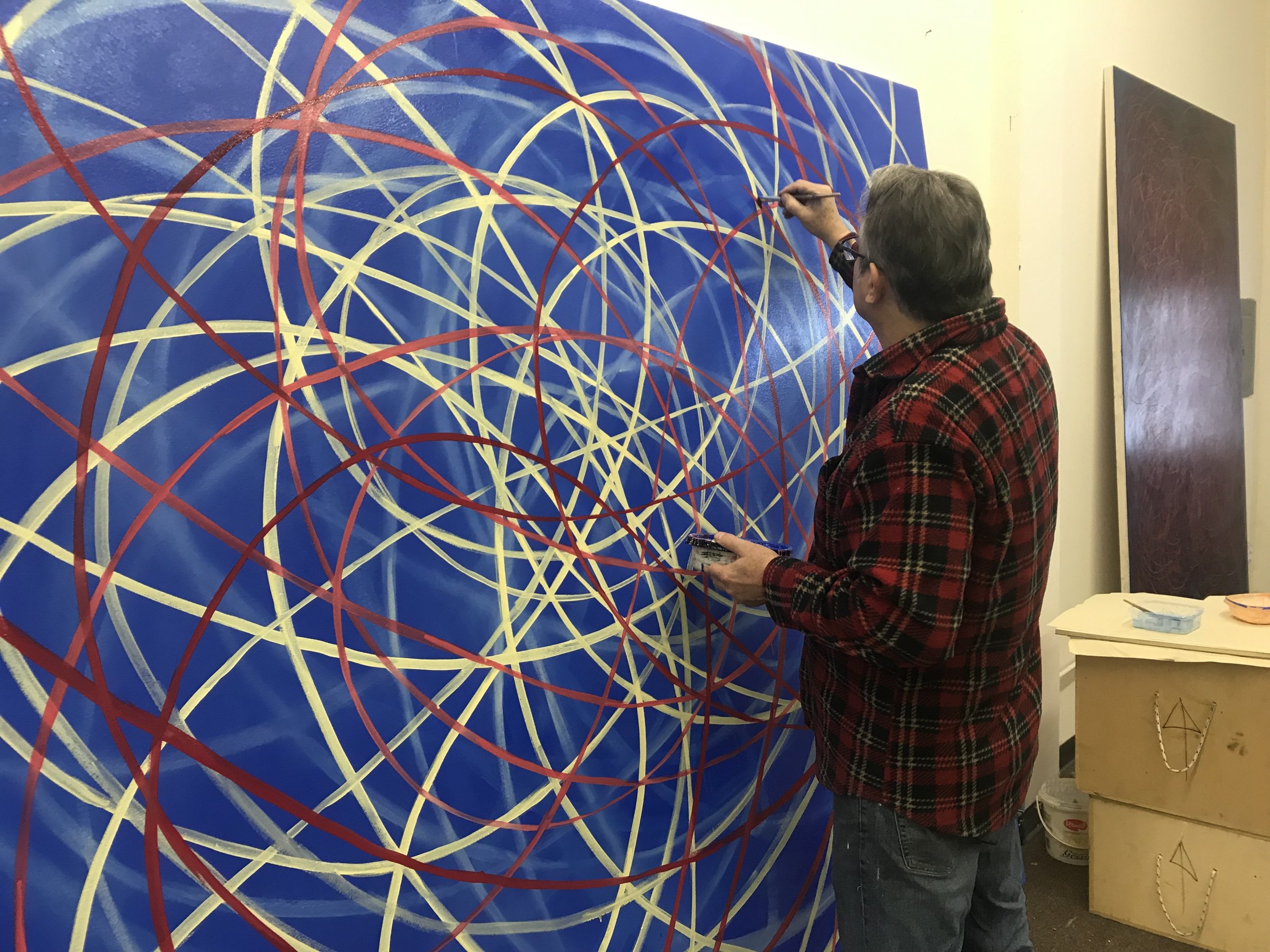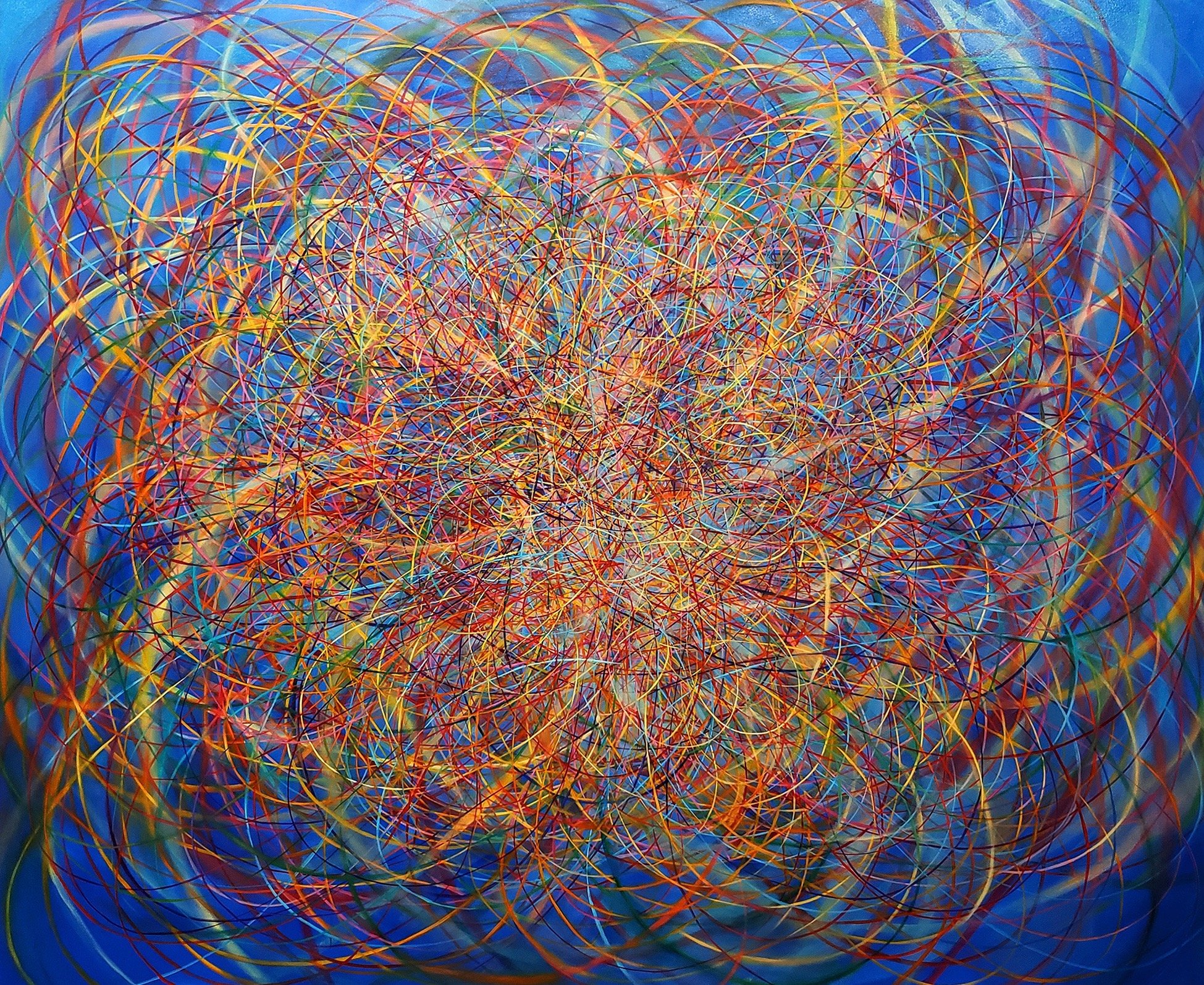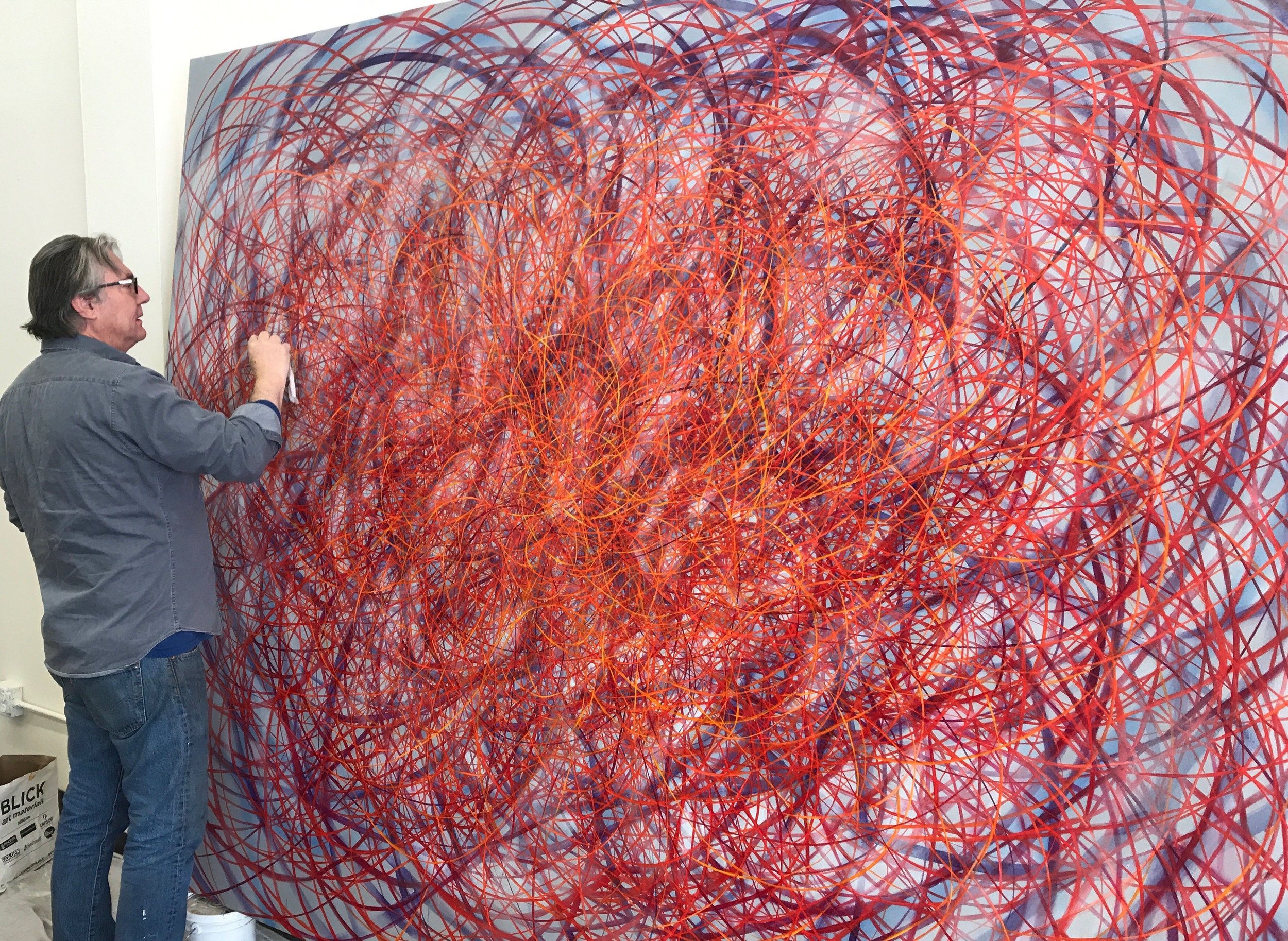Home is where one starts from. As we grow older
The world becomes stranger, the pattern more complicated
Of dead and living. Not the intense moment
Isolated with no before and after,
But a lifetime burning in every moment
And not the lifetime of one man only
But of old stones that cannot be deciphered.
There is time for the evening under starlight,
A time for the evening under lamplight
Love is mostly nearly itself
When here and now cease to matter.
–T.S. Eliot, Four Quartets (East Coker)
This is a taste of the profound poem by T.S Eliot, “Four Quartets,” which consist of four meditations, with the common thread of man’s relationship with time, the universe, and the divine. Eliot’s desire is for the reader to focus on the present moment, and the order of the universe. The four quartets are meant to reflect the four classical elements, or maybe the four seasons. Section I (Burnt Norton) – air, Section II (East Coker) – earth, Section III (Dry Salvages) – water, and Section IV (Little Gidding) – fire. Eliot wrote the first poem in 1936 and the rest during World War II, when he served as a watchman during the London Blitz; the work was considered one of his greatest and consequently applauded for giving hope to England as well.
Thomas Stearns Eliot, (26 September 1888 – 4 January 1965), was known as one of the twentieth century's major poets, also an essayist, publisher, playwright, and literary critic. Eliot was born in St. Louis Missouri in 1888 and later moved to England in 1924 at the age of 25. He settled there writing many of his greatest works. A few years later in 1927, he became a British subject. Eliot passed away on January 4, 1965, in Kensington, London where he spent the remaining years of his life.
T.S. Eliot's "The Four Quartets", in the original format, Burnt Norton, East Coker, The Dry Salvages and Little Gidding
The first section of ‘Burnt Norton’ – which is a real house in Gloucestershire – was inspired by Eliot’s visit to the house in the early 1930s with Emily Hale, an American friend of his for some years. (Short Analysis of T. S. Eliot's Four Quartets)
I met Shane Guffogg some 18 years ago, but began working for him in 2015. After having followed his career up until that point, I further learned about his series, At the Still Point of the Turning World, based on Eliot's Four Quartets. Guffogg became fascinated by the couplet:
“At the Still Point of the Turning World, Neither flesh nor fleshless;
Neither from nor towards; at the still point, there the dance is.”
Being one who is often contemplating life and the spiritual questions that go along with it, I found myself deeply inspired by Guffogg’s paintings, and his search to explore one of the writer’s greatest works. Like Eliot’s need to explore time and universal being, Guffogg was floating on the same cloud. I was keen to ask him how this all came about.
Shane Guffogg: “I first started reading TS Eliot's Four Quartets poems in 1994. It was in a language that I felt was akin to my paintings, as in, the thought of looking at time as a state of mind instead of linear. I would, on occasion, read a segment of the poem, and then put it down to let it sink in. Kind of like when we water a tree and it takes time for the water to make its way down to the roots. TS Eliot's words are like water for me; they are essential for my understanding of the abstract.
“There is one part of the poem that struck me from the beginning, and I kept going back to it over and over: 'The still point of the turning world.' That idea brought up the image of an axis about which all things were spinning around. In my mind, the axis is powered by gravity and is at the center of all, where time – past, present, and future – all exist at a single point. My next step was wondering, 'What would that look like?' These thoughts existed somewhere in the back of my mind until they surfaced again one night while attending a meeting for the Downtown Neighborhood Council. I was sitting there with my fellow board members, listening to a person tell us what kind of restaurant they wanted to open at a certain location, hearing the arguments, pros andcons, for this new business venture, and then voting to issue permits if it was a yes. While sitting there, I was thinking about TS Eliot's poem, having read a few pages of it earlier that day. I had a piece of paper in front of me to take notes, but decided instead to doodle on it. Doodling for me is like opening up a direct channel to my subconscious – my pencil was moving without my conscious thoughts guiding it. When I looked down at what I was doing, I realized I was drawing what might be the still point of all that was being said in that meeting. The one continuous line kept looping back towards the center, as if gravity was pulling it in, only to send it back out to the edge of the paper again. This movement was repeated over and over until the page was full. I recognized it as if it had always been, and I knew I was about to begin a new series of paintings. They began in May of 2009.”
Bunker Hill Magazine The Painter's Manifesto, May 2010
Shane Guffogg sitting in front of, At the Still Point #3, 2009
oil on canvas, 60 x 60"
At the Still Point #11, 2010
oil on canvas, 50 x 60"
The artist working on Still Point paintings in 2011
Photo credit: Neville Parsons Guffogg
At the Still Point #35, 2010-2011
oil on canvas, 62 x 74"
At the Still Point - Time Present Time Past, 2016,
oil on canvas, 58 x 48"
To think that it’s 2019 and the artist has been working on this series alongside other works for the past 10 years; last year alone he created over 20 paintings for it, and to date there are over 80. All the while still exploring, finding what and where his still point is. Guffogg works in solitude as he communes with the cosmic energies; these paintings are quite complex to create. From time to time, I have seen him work on the paintings in different stages, the first gesture comes out of his own physicality in what looks like a trance-like state. Surrendering his body movement, emptying his mind, and working within the boundaries of his own being, as the painting begins and ends with one continuous line. These movements are a ballet of sorts, a performance, and skill akin to the sacred art of tai chi, where one focuses on the mind and the movements, which bring about a state of mental clarity. As Guffogg moves and flows, listening within to the moment as it is rendered, he has a great ability to find his inner state of calmness. Nothing is random and there are no accidents, this is a performance that is practiced over and over in his mind until the moment of releasing the visual poetry onto the canvas. Comparable to Eliot’s quest to convey words of great meaning, with each brushstroke the artist explores the past, present, and future. And I, working within the confines of Guffogg’s many art studios, can authenticate that he lives his working life in accordance to exploring this very still point. As every day is filled with wonder and distractions, he always returns to resume a union within.
(Detail) At the Still Point of the Turning World
At the Still Point of the Turning World, 2016
oil on canvas, 80 x 100"
I have taken time to study the poem deeper by reading some literary guides. This has helped me contemplate both the writer’s intent and the artist’s intuitive means. The paintings range from 12 x 14 inches to 7 x 9 feet, and are all inspired by lines of the poem. There are some comparable facts as Guffogg creates a dynamic analysis of his own, finding nuances to rediscover and translate into his own visual language. To me, the lines of the poem he is not referencing are equally interesting. Both the poem and the paintings reference the theme of time: what was, what is, and what it can become will all be areas of lengthy insight for each viewer. Guffogg's journey, using his own physicality and abstracted reference, is as equally profound to Eliot’s questioning and yearning. In the writer’s second section, East Coker, he explores unity and speaks “Among the stars,” with the fire and rose joined as one, which references living in the present moment, where time is constantly moving. The artist similarly touches on this with paintings like, Into the Rose Garden,which visually captures the fresh aroma of life, and Disturbing the Dust on a Bowl ofLeaves, which then foreshadows the mindset of Shall We Follow. The purpose of Eliot'spoetry is to remind us that our ideal of happiness is nothing compared to the true bliss of spiritual peace – the same way that a dusty bowl of roses is nothing compared to walking through an actual rose garden. Guffogg works in the same way, playing along with Eliot's theme, diving deep into the rose garden and losing himself in the vast ocean of reality's enlightenment by creating his work.
At the Still Point - Into the Garden, 2016
oil on canvas, 60 x 48"
At the Still Point - Disturbing the Dust in a Bowl of Rose Leaves, 2017
oil on canvas, 60 x 48"
In the Los Angeles Studio with works in progress, At the Still Point -Shall We Follow and At the Still Point -Between Two Waves in the Sea
At the Still Point - Shall We Follow, 2016
oil on canvas, 60 x 48"
At the Still Point -Between Two Waves in the Sea, 2016
oil on canvas, 60 x 48"
At the Still Point - Appeasing Long Forgotten Wars, 2015-2016
oil on canvas, 60 x 48"
At the Still Point - So We Moved in a Formal Pattern #1 , 2018
oil on canvas, 34 x 24"
At the Still Point - So We Moved in a Formal Pattern #1 and #2, 2018
oil on canvas, 34 x 24"
At the Still Point - And the Pool is Filled with Water out of Sunlight, 2017
oil on canvas, 60 x 48"
For me, studying the poem and watching the artist begin a new painting is likened to a kind of game; Which lines will Guffogg take to create his next painting? He rejected Eliot’s, “And the lotos rose, quietly, the surface glittered out of heart of light,” but did make a painting from the following line, “And they were behind us, reflected in the pool.” In the poem, time goes back and forth. This is a subject Guffogg has been fond of since his youth, after encountering Einstein’s Theory of Relativity, which made an impact on him and is often referenced in some way or another in his works. It was no surprise that the next painting would be, Time Past and Time Future. Eliot carries on with, “What might have been and what has been Point to end, which is always present.” He describes nature through verses like, “Garlic and sapphires in the mud, Clot the bedded axle tree to Ascend to summer in the tree,” and, “But reconciled among the stars,” which then leads to Guffogg’s main inspiration:
At the still point of the turning world. Neither flesh nor fleshless;
Neither from nor towards; at the still point, there the dance is,
But neither arrest nor movement. And do not call it fixity,
Where past and future are gathered.
Neither movement from nor towards,
Neither ascent nor decline. Except for the point, the still point,
There would be no dance and there is only the dance.
The artist begins the first stages of the painting
Guffogg uses his full physicality to lay down the first 'path'
I went back to Guffogg and asked him what it was like to be in the whirl of his paintings and what he is hoping the viewer might take away.
Shane Guffogg: “These paintings are a form of meditation that I engage in, and my hope is that they do the same for the viewer. I want them to virtually short circuit the mind by stopping any intellectual reasoning for how they came into existence or why. They are an accumulation of thoughts and moments that have found a home to reside in: paint on canvas. Over the past 3 years, I have taken the titles for the paintings of this series from lines within the poem, and by doing this, I feel I am conversing in my own way with T.S. Eliot. His words instruct or guide me on what colors to choose, which, in turn, guides my movement and the direction of my brush strokes and which colors will be applied. It’s almost like a navigational App that tells me where I am en route to my destination.”
The artist is deeply committed to the process of creation, to date, he has created over 80 paintings in the series, each one completely independent to the next.
The next layers of the painting, some lines disappearing others being further revealed.
(Detail) At the Still Point - Inhabit the Garden, 2019
At the Still Point - Inhabit the Garden, 2019
oil on canvas, 78 x 96"
But really, I think that these paintings are as much for him as they are for the viewer. As I watch him work, deep into the painting process, lines begin and end, but not without beginning again. Like the sun, rising and setting each day, change is a key factor – how we look at each line changes based on our mood or the environment in which we view the work. The artist has a variety of these paintings placed throughout his studio and home. I see them moving constantly, like the long and shorthand on a clock; the lines and the spaces in between do not stop, and I, standing still, amdancing and moving with them, yet completely present, still in space. And, as a side note, I have witnessed that when people are in the room, depending on who is there, it literally changes the way the painting appears as if the painting is interacting or absorbing the person's energy! Just as my mind rises to solve the problems of the day, the paintings remind me to be still and take a breath. The smaller paintings take up the smaller spaces in my mind and the larger-scale works enter my soul. Fearlessly I swim through them, weaving in and out of their currents, coming up for air. The paintings teach me about myself as I charge off to an event or meeting, and at the last minute, the paintings act as a reminder that there is no need to race about, as the newest and largest painting to date that Guffogg has completed so aptly professes, Only Through Time is Time Conquered.
Victoria Chapman
Studio Manager, Guffogg Studio
Edited by Neville Guffogg
(In progress) At the Still Point - Only Through Time is Time Conquered
(Side view) At the Still Point - Only Through Time is Time Conquered
At the Still Point - Only Through Time is Time Conquered, 2018
oil on canvas, 84 x 108"
TO LEARN MORE ABOUT SHANE GUFFOGG VISIT:
WEBSITE: https://sguffogg.com
BLOG: https://shaneguffogg.wordpress.com/blog/
INSTAGRAM: https://www.instagram.com/shaneguffogg/
EMAIL: shaneguffoggart@gmail.com

